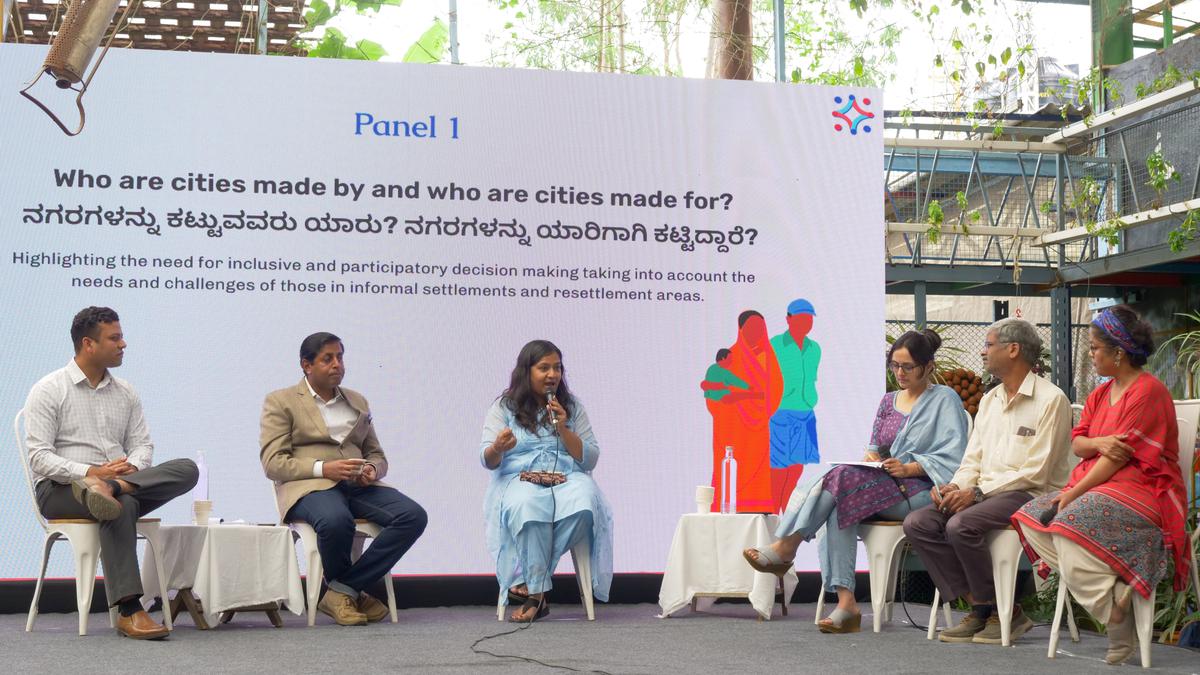
‘What have we built for people who have built our cities?’
The Hindu
What is the rate at which the built-up area in Bengaluru is growing per minute? “600 sqft per minute. That is the pace at which we are growing,” said Jaya Dhindaw, executive programme director, Sustainable Cities and Director, WRI India Ross Centre.
What is the rate at which the built-up area in Bengaluru is growing per minute? “600 sqft per minute. That is the pace at which we are growing,” said Jaya Dhindaw, executive programme director, Sustainable Cities and Director, WRI India Ross Centre.
Rapid though the growth is, however, it is far from inclusive as a panel discussion titled Who are cities made by and who are cities made for? reiterated. “You realise that the vulnerable, the poor, the ones who have contributed least to the problems of urbanisation and climate change are the ones suffering the most because of it, and they will continue to,” said Ms. Dhindaw, moderator of the panel discussion, the highlight of a larger convening event spearheaded by the Bengaluru-based collective, Alli Serona, held at the Bangalore Creative Circus on Tuesday.
The event, which brought together some key stakeholders in the mobility and housing sectors, comprised panel discussions, an experience zone, a performance piece, and some film screenings, all of which strove to drive home this message: cities need to be more equitable spaces. After all, as human rights activist Isaac Selva, editor of the Kannada magazine Slum Jagatthu, asked at the panel discussion: “What have we built for people who have built our cities?”
Ashish Verma, IISc Sustainable Transportation Lab, who was also part of the discussion, pointed out that developing faster ways of movement, such as underpasses, flyovers, road widening and so on, has led to a huge urban sprawl. “Our cities have grown horizontally. What was once hallis or villages is now part of the city,” he said, adding that gentrification of these neighbourhoods has ended up pushing low-income people even further towards the fringes and outskirts of a city, where there is some low-cost housing. “But their livelihood is in the centre. And you neither have good transport nor good transport infrastructure,” he said, adding that stakeholder consultation is integral to the transport planning exercise from conception to implementation. “We need to get the development agenda right at the policy level. It needs to be sustainable and liveable Bengaluru for all.”
It is also essential to acknowledge that many problems are interconnected, as Prarthana Ramesh of Bengaluru-based non-profit Janaagraha was quick to point out. “Today, our urban centres stand at a crucial juncture, grappling not only with the issues stemming from unplanned and unprecedented growth but also facing larger-than-life crises of climate change and equity,” she said, adding that one needs to address underlying causes rather than merely treating symptoms when it comes to constructing sustainable and inclusive cities. “The pivotal factors of planning and design, transparency, accountability and participation, as well as empowered political representation and the capacity of resources, will play a substantial role in the endeavour to develop cities that cater to the needs of all residents,” she said.













